The Inquisition aren't coming....they're already here
Warhammer 40,000: Imperium Maledictum is still a very new game system from Cubicle7, and one that has garnered a lot of attention here in 2024. Initially released digitally in March 2023, physical copies of the Imperium Maledictum rulebook didn’t ship until late 2023. Since then, we have received a wealth of content that would make even a Rogue Trader smile. June ’24 brought us both the Imperium Maledictum Starter Set and the scenario “His Glorious Shield”, but that was quickly overshadowed with the news of the first big expansion and growth of the Imperium Maledictum game system. Releasing digitally back in October, players have had this Inquisition Player’s guide now for almost two months by the time of this writing, and the expansive growth it brings to the game is amazing – and only half of this first expansions content, to be followed by the Inquisition GM’s Guide in 2025. It is apparent that Cubicle7 are investing time, resources, and creative power into this game system to keep it growing for years to come.
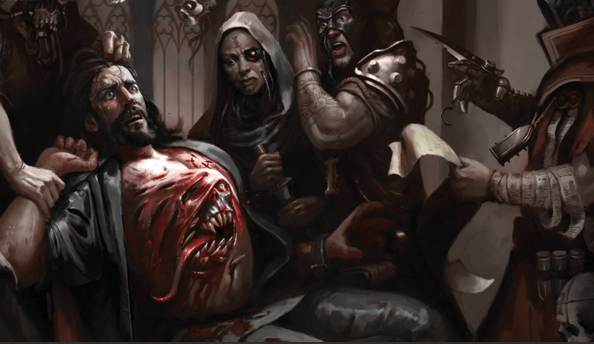
First and foremost, like every Cubicle7 release that we have reviewed the content is beautiful, filled with thematic art that aligns both with the 40k universe but also with the descriptions of the game system. The standard edition has a beautiful art piece featuring two characters in front of the symbol of the Inquisition, but what we need to discuss here is this collector’s edition. Both the Inquisition Player’s Guide and future Inquisition GM’s Guide have stunning collector’s edition copies out for purchase, and reminiscent of both the WFRP The Enemy Within and the Imperium Maledictum Core Rulebook Collector’s Editions, they are beautiful. These are pieces worthy of a collector to fill out those shelves of rulebooks and grab the eye.
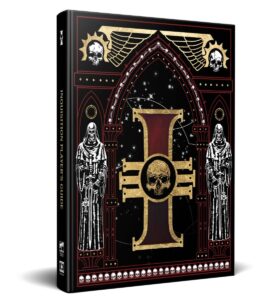
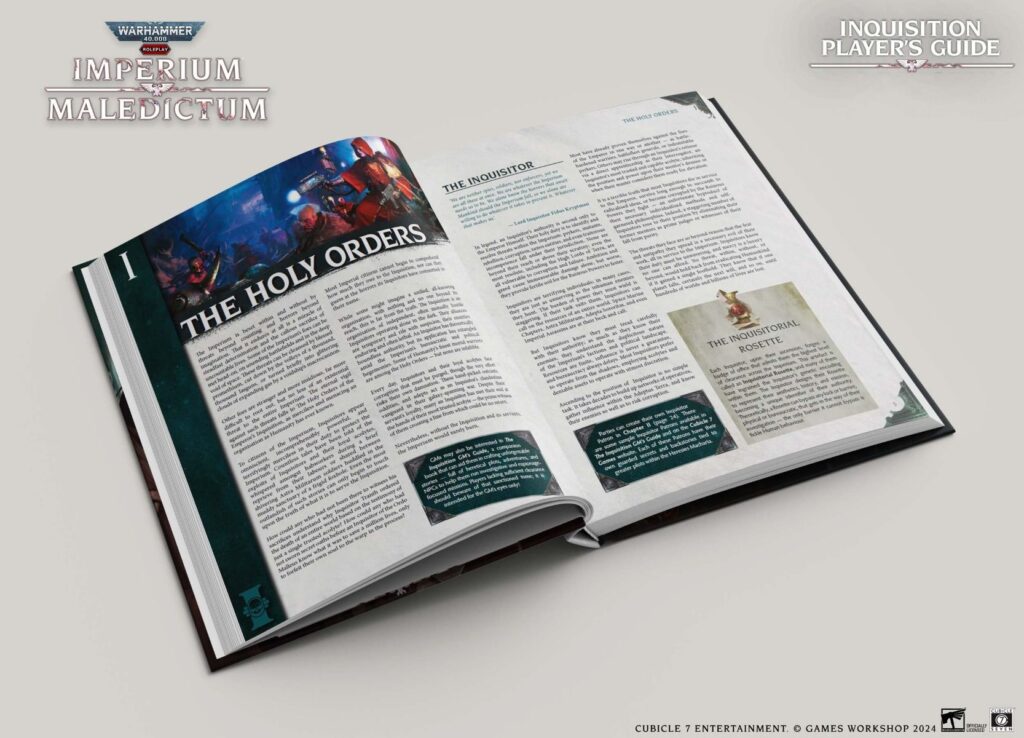
They say don’t judge a book by it’s cover, but this isn’t just a nice art piece. This Inquisition Player’s Guide is meaty, in line with expectations of what Cubicle7 should be producing for these game systems we love. The guide is broken out into expected sections, and one of my favorite parts is the very first chapter. Expounding upon the Inquisition with a detailed dive into the purpose of acolytes, Inquisitorial espionage, and most importantly each of the three Holy Ordos – Xenos, Hereticus, Malleus – this opening 17 page section is a must read for anyone interested in the machinations of the Inquisition.
Following this detail is a 15 page expansion of the patron creation system first detailed in the Imperium Maledictum core rulebook. Meant to be used alongside the core book, this section increases options for Inquisitorial Patrons and, based on Cubicle7 comments, is likely the first but not last such release for this game system.
This Guide adds the first options for Ordo Malleus patrons, the Holy Ordo focused on combating Daemons, and perhaps rightly so. In a game system such as Imperium Maledictum, where you don’t play as the all powerful Astartes and are more often than not just a basic soul in the all encompassing violence of the far future, being part of this Ordo that hunt Daemons is likely a sentence to a quick death. Still, having this option is amazing, and my GM brain is already whirring with the potential it could hold for a future season of “The Tainted Hive”.
With new created patrons and new options come new boons and liabilities, with Inquisition specific expansion into both of these fields for the patron creation. It’s nice to see Cubicle7 expanding on this particular portion of the system, as I have found that the Patron’s boons and liabilities are a topic of discussion for our players…though that may be because their version of Halikarn is a paranoid man who adamantly works to remain in the shadows.
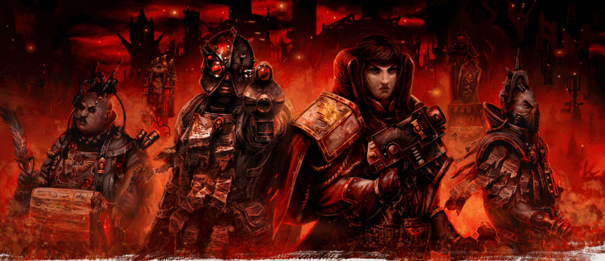
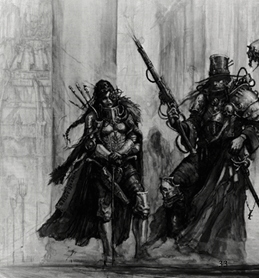
What sort of Player’s Guide would this be if it only gave more Patron options? The third section of this guide is 22 pages of player specific options for Acolyte creation. While this section isn’t helpful for characters in existing campaigns, it is a great boon for characters who die during a campaign and need to re-roll, or for the creation of a new campaign. There are fully fleshed out expansions to the Macharian Origins, with Inquisition specific origins that could explain why you were of interest to the Inquisition and your patron. I love that this system has this whole origin aspect to give more RP potential for how a powerful NPC picked your character out of the teeming billions of the Imperium, and these origins have so much potential. Imagine playing a character whose backstory includes surviving being used as a Daemonic Host!
This guide has a bit of something for new and existing characters alike, with the next few sections focusing on growing the skills and talents your players can access, which we have already immediately included into our game mid-campaign. While there are only a few new skill specializations at this time, the inclusion of a specialization of disguising oneself is a great add in a game with such a heavy emphasis on investigation. Talent wise, the guide adds 22 new talents for use by your players, many of which are tied to the new mechanic of Subtlety that is explained later in the guide.
For our sanctioned (or unsanctioned) Psykers, the guide expands existing power portfolios with five new minor powers, and three new powers for each of the differing specializations. This growth ensures psyker players have more options without being overwhelming, and I suspect is again just the start of what Cubicle7 intends to bring in the future.
With new creation steps, skills, talents, and psyker powers a growth of the armoury was to be expected – and while we won’t go into too many details here the additional items have a few of my players drooling to try to get their hands on them. New Xenos options and even the dangerous Daemonblades are now on the table – literally.
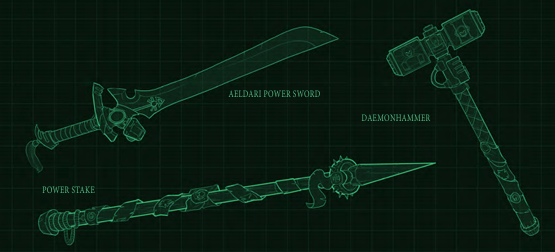
While members of the Inquisition often roam the stars with few friends, they can now obtain familiars thanks to the Inquisition Player’s Guide. With a 10 page spread highlighting familiars, this guide adds a new dimension to a game regardless who the patron is. If your party has a Mechanicus patron, there is nothing saying the party members cannot obtain familiars – a detail highlighted at the start of Chapter 6 by Cubicle7 themselves.
With rules on using familiars in and out of combat, healing them, training them, and acquiring them this section has everything a GM or player need to pursue a familiar. One thing I loved was that the chapter has information on the three types of familiars you would expect to see in 40k: standard, flesh and bone familiars; cybernetically enhanced familiars; and psyber/psychic familiars. If your players aren’t interested in the familiars listed in the Familiar Bestiary there are even rules for creating their own familiar for the game – and the cost to do so.
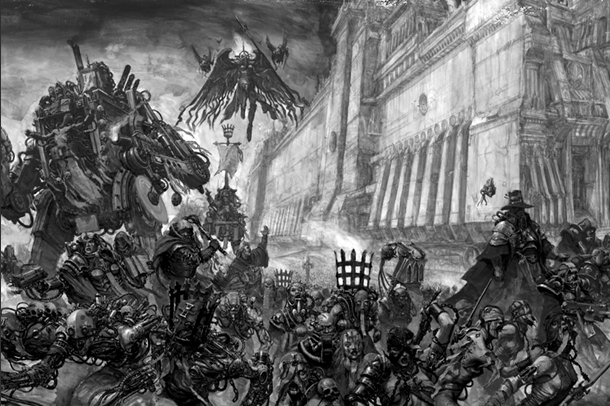
The Inquisition does not act brazenly, often preferring to keep their secrecy and avoid the panic and lies that follow the populace learning an Inquisitor is on planet. The new subtlety mechanic is a brilliant addition to support GMs, parties, and investigation heavy games where it pays to stick to the shadows. Most GM’s will read this section and likely have a thought similar to my own – “I already do this, but this is great”. Speaking from experience, I am always judging the players actions to determine how “caught” they are – or, in the case of subtlety, how overt. Seeing a measurable system created that not only aligns with what I already do but gives me even more scope and concept for the players, as well as a framework they can see and use to assess their own risk is fantastic. We implemented subtlety immediately mid-campaign, as it merely replaced a metric I was already keeping on my end as the GM.
With all of the above, plus a short section on Inquisition specific events and endeavors to occur between missions, this guide can drown your game in Inquisition flair and flavor. The Inquisition Player’s Guide has a wealth of pros, but all lists need balance. There is one major con I could conceive while reading and reviewing this book: it came too late to be fully implemented for the first two seasons of “The Tainted Hive”. Truthfully, there is very little that this book doesn’t do well – the content is clean, concise, and expansive. That said, it is not required for a game, but if you are in Imperium Maledictum for a long haul there is no reason you should not own this book.
The Inquisition Player’s Guide is a 9.2/10 non-mandatory but highly recommended addition.
You can pick up your copy from Cubicle 7 here.
Purchase of the guide through this link carries no monetary benefit to Dead Suns Company, but does help us continue to review these materials for Cubicle 7.
Digital product gifted from Cubicle7 for review.


